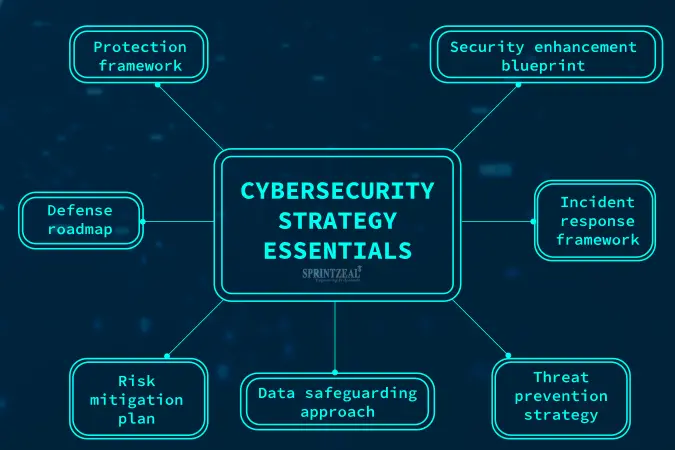Post Preview
Key Takeaways:
- Understanding the crucial role of evolving cybersecurity strategies in today’s business world.
- Detailing the importance of implementing a multi-layered approach to protect against diverse threats.
- Highlighting the need for up-to-date data protection laws and employee cybersecurity training.
- Emphasizing the significance of disaster recovery and incident response planning.
- Discussing the importance of measuring the ROI in cybersecurity investments.
Table of Contents:
- Introduction
- Cybersecurity Strategies for Businesses
- The Role of Technology in Risk Management
- Data Protection Laws and Compliance
- Best Practices for Employee Training and Awareness
- Ensuring Robust Network Security
- Cybersecurity and the Remote Workforce
- Disaster Recovery Planning
- Incident Response Readiness
- Cybersecurity Investments and ROI
Introduction
The global business environment faces an unprecedented upsurge in cyber threats, with cyberattacks becoming more intricate and disruptive. For instance, this escalation has rendered traditional security measures insufficient, compelling businesses to prioritize establishing comprehensive cybersecurity measures by Fortinet in China and other regions to combat the sophisticated digital onslaught. As the digital landscape continues to expand, the need for advanced risk management and data protection strategies grows more robust, making this topic of cybersecurity an obligatory focus for businesses aiming to secure their digital assets and reputation.
Cybersecurity Strategies for Businesses
Cyber threats range from the theft of intellectual property to crippling ransomware attacks that can stall business operations entirely. To effectively counter such threats, companies must perform thorough cyber risk assessments that identify which assets are most valuable and at risk. Following this, they can implement layered defense strategies that include technological solutions, strong access controls, and vigilant monitoring systems. Regular audits and frameworks encourage a robust security culture while signaling weaknesses that may necessitate immediate attention.
The Role of Technology in Risk Management
Recent developments in technology have significantly bolstered the capacity to manage cybersecurity risks. AI-driven security systems and advanced algorithms are instrumental in identifying abnormal behaviors and potential threats with rapid response times. This level of technology can forecast threat patterns, allowing businesses to anticipate and neutralize threats preemptively. Moreover, blockchain technology provides tamper-proof transaction records, and encrypted messaging secures communications from unauthorized interceptions. As the nexus of cyber threats diversifies, reliance on such sophisticated, tech-driven defense mechanisms becomes vital.
Data Protection Laws and Compliance
Data protection regulations have become stringent worldwide as governments respond to increased cyber threats and public calls for better personal data security. In regions with strict laws, businesses must ensure that their data handling practices conform to the prescribed standards. Crafting a compliance strategy involves thoroughly understanding these laws and integrating legal counsel throughout the planning process. Compliance is a dynamic obligation, requiring ongoing audits and adjustments to match evolving regulations and technological landscapes.
Best Practices for Employee Training and Awareness
Employees are often the first line of defense and potentially the weakest if unprepared. Effective cybersecurity awareness and training programs can dramatically reduce the risk of employee-related security breaches. Businesses can engender a culture of security mindfulness by regularly updating staff on new threat vectors and the company’s security protocols and by conducting mock phishing exercises. This proactive approach toward cybersecurity education ensures that employees can recognize social engineering tactics and reinforce their role as custodians of the company’s digital security.
Ensuring Robust Network Security
Securing these pathways is more critical than ever with the increasing volume of data processed through corporate networks. Network security today involves deploying advanced firewalls that can inspect and filter incoming and outgoing traffic at granular levels, using technologies such as deep packet inspection for enhanced threat identification. The move towards distributed networks has also seen increased adoption of the Secure Access Service Edge (SASE), which blends network and security functions with WAN capabilities to support organizations’ dynamic, secure access needs.
Cybersecurity and the Remote Workforce
The shift to remote work has necessitated a reassessment of security strategies to curb the amplified risk exposure. With employees logging in from various locations, establishing a secure virtual private network (VPN) is essential to ensure encrypted connections and protect sensitive information from cyber snoopers. Strict access control measures, such as multi-factor authentication and the least privilege principle, must be implemented to reduce the possibility of illegal access and data breaches.
Disaster Recovery Planning
Disaster recovery planning is integral to a business’s continuity strategy, providing a blueprint for recovering IT systems, data, and infrastructure during a cyber incident. It includes establishing a detailed response strategy backed by secure, off-site data storage solutions and recovery protocols. It’s essential for businesses not just to have a disaster recovery plan in place but also to routinely practice and refine their response through simulations, enabling them to respond effectively and reduce downtime when security incidents occur.
Incident Response Readiness
An incident response plan is crucial to an organization’s cybersecurity framework. It details how the organization responds to confirmed security incidents, including the roles and responsibilities of the response team, communication plans, and how to address legal and regulatory requirements. An effective incident response plan involves a coordinated effort by all stakeholders. It includes provisions for forensic analysis to learn from the incident and strengthen the organization’s defenses for the future.
Cybersecurity Investments and ROI
As with any significant business expenditure, it’s crucial to scrutinize the return on investment (ROI) for cybersecurity spending. Effectively demonstrating the value of these investments can be a complex endeavor, but it is necessary to ensure buy-in from stakeholders and strategic planning. Sophisticated analytical tools can aid in illustrating how cybersecurity measures prevent potential losses, foster streamlined operations, and create value by maintaining customer trust and brand reputation in an era where consumers are increasingly concerned about data security.
Businesses need to keep appropriately informed by consulting reliable sources to stay on top of the constantly changing landscape of cybersecurity. With the right combination of technology, training, and preparedness, organizations can confidently navigate the complex cyber threat landscape and ensure the trust and safety of their digital platforms.




